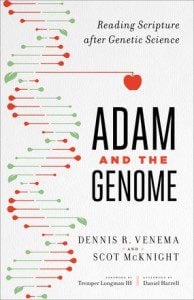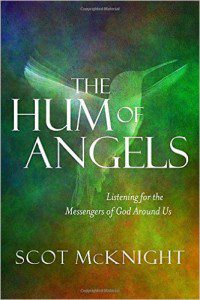The most beautiful libraries in the world:
Libraries are generally underrated as places to take some rare time out, sit for a while, read a book and admire the often stunning architecture.
But French photographer Franck Bohbot has taken it upon himself to travel the world in search of some of the most beautiful book havens out there and so far has visited Paris and Rome. He plans to travel to Europe and South America, North America and Asia next.
His on-going project, House of Books, is just beginning, but he aims to “offer a new approach in terms of atmosphere, colours and composition”.
[I liked the one in Prague.]
Crumbling, abandoned churches in Russia. Photos galore.
Trouble Town — the reality of scattering gangs in Chicago:
A few years ago, City Hall demolished the public housing projects, and the guys-behind-the-guys invested in those newly cleansed urban neighborhoods.
There was money to be made in real estate and a media buzz to be buzzed and backslaps all around.
But the gangs that plagued the projects weren’t part of that buzz. They were driven out and sought refuge in low income and staunchly middle-class black neighborhoods like South Shore and Chatham, or south suburbs like Country Club Hills.
African-American leaders like Edward “Buzz” Palmer, founder of the Afro-American Patrolmen’s League, tried to warn Chicago about the roots of the new violence, but City Hall didn’t want Chicago to hear.
Some of gangs ended up in Roseland, now the Wild, Wild Hundreds. And they did what they do best. They fire into crowds. Their bullets hit innocent people, like grandfathers and little boys.
In August 2014, ISIS marked Eid al-Fitr, the end of Ramadan, with a 20-minute, high-definition video offering its greetings to the Muslim world.
Gauzy images of smiling worshippers embracing at a mosque cut to children passing out sweets to break the Ramadan fast. These scenes were interspersed with shots of the muhajireen (Arabic for “emigrants”)—British, Finnish, Indonesian, Moroccan, Belgian, American, and South African—each repeating a variation on the same message.
“I’m calling on all the Muslims living in the West, America, Europe, and everywhere else, to come, to make hijra with your families to the land of Khilafah,” said a Finnish fighter of Somali descent. “Here, you go for fighting and afterwards you come back to your families. And if you get killed, then … you’ll enter heaven, God willing, and Allah will take care of those you’ve left behind. So here, the caliphate will take care of you.”
Turek says his hope is that, down the road, circadian science will be integrated into the practice of medicine.
“We’d like to be in a position where we’d be able to monitor hundreds of different rhythms in your body and see if they’re out of sync— and then try to normalize them,” says Turek.
Whether — or how quickly — this may happen is hard to say. But what’s clear is that the study of the biology of time is exploding.
“What we’re doing now in medicine is what Einstein did for physics,” says Turek. “He brought time to physics. We’re bringing time to biology.”
The irony, of course, is that this insight comes at a time when the demands of our 24/7 society means more and more of us are overriding our internal clocks.
The slow death of the home-cooked meal:
Cooking isn’t dead in this country. But it isn’t exactly alive and well either.
“How is it that we are so eager to watch other people browning beef cubes on screen but so much less eager to brown them ourselves?” Michael Pollan asked, in a scathing 2009 New York Times piece about the great irony of America’s supposed interest in cooking.
Indeed, by virtually any measure one might imagine, Americans are leaving their stoves, ovens, countertops and cutting boards behind — or, at least, untouched a lot more often. The purest example of this trend is playing out in the types of dinners people are eating at home today. Less than 60 percent of suppers served at home were actually cooked at home last year. Only 30 years ago, the percentage was closer to 75 percent.
[5 of 7 for us on average. How about you?]
I would not be the pastor, nor the Christian, that I am today if it weren’t for female leaders in the Church. There have been women, in all levels of leadership, who have played indispensable roles in my faith and spiritual formation. I have been pastored, taught, and discipled by women who are called, anointed, and commissioned by God. These women are not in violation of Scripture; they are continuing a long legacy of women whom God has used and worked through to lead the Church and build the Kingdom. These women are boldly and faithfully living into their created purpose.
The Bible is full of examples of women serving in a variety of leadership positions in both the Old and the New Testament. These women serve as leaders in the Church and in the broader life of the religious communities in which they serve. From Debra, Huldah, and Miriam in the Old Testament, to a plethora of woman like the apostles Lydia and Junia, Anna the prophetess, Phoebe the deacon, Priscilla, Martha, Mary, Euodia, Syntyche, Tabitha (sometimes translated as Dorcas), and the nameless woman at the well in the New Testament — these women all represent a variety of different leadership roles that women are called to serve in throughout the Body.
Good article on the J-word — and anti-Semitism.
Growth of digitalized texbooks and its problem, by Terrance F. Ross:
Ultimately, these digitized materials are somewhat of a paradox. They are standardized at the top—the programs are aligned with the Common Core and rely on big data—but personalized underneath, customized around each student according to what the software gleans from assessments.
This shift also means that kids are spending more time than ever looking at screens, which could be physically and cognitively detrimental in the long run. The American Academy of Pediatrics, at least for now, recommends that kids spend no longer than two hours a day looking at digital devices. The shift is also taking a toll on the frequency that children engage in handwritten work, whichreports have shown is far more beneficial than taking notes on a laptop. And these changes could be disregarding how kids want to learn. Recent studies suggest that “digital natives” still prefer reading in print. One University of Washington pilot study of digital textbooks found that a quarter of students surveyed bought the print versions of e-textbooks that they were given for free, according to a recent Washington Post report.
Bill Buxton, the founder of the open-source publisher Textbook Equity, is skeptical of technology as a substitute for traditional learning materials. “I haven’t seen really strong evidence that people are doing a lot better with the online stuff than textbooks,” he said. “Where’s the evidence? … It’s coming from the biased companies; they want to make sure people buy it.”
Others are wary of technology’s impact on learning, including Nancie Atwell, who founded the Maine-based Center for Teaching and Learning and is a top-ten finalist for a forthcoming global-teacher contest that will award the winner $1 Million. “I think they are a disaster for teachers. We don’t know anything about the value of eBook. They’ve been foisted on teachers because they are the latest technological advance so they must be good,” she recently explained to my colleague. “The problem with eBooks is that the kids remember much less than what they read on the screen compared to the book.”
It really shouldn’t be a surprise that, on becoming Archbishop of Canterbury two years ago, he announced his three priorities as:
- Prayer and the renewal of the religious life.
- Reconciliation
- Evangelism and witness
Now, just in case anyone was thinking that he’s become distracted along the way and left these intentions on the back seat, Welby delivered an impassioned speech this week devoted to evangelism, which set out his vision for a Church in which every Christian shares “the revolutionary love” of Jesus Christ.
This was the first in a new series of lectures at Lambeth Palace, and if the others match the gravity and quality of this one, they will be well worth hearing and disseminating.
“I want to start by saying just two simple sentences about the church,” Welby began. “First, the church exists to worship God in Jesus Christ. Second, the Church exists to make new disciples of Jesus Christ. Everything else is decoration. Some of it may be very necessary, useful, or wonderful decoration – but it’s decoration.”
 Check out this “weapon of mass instruction”! Like beating swords into ploughshares, eh? [Image credit]
Check out this “weapon of mass instruction”! Like beating swords into ploughshares, eh? [Image credit]
In celebration of World Book Day (today!) 7UP commissioned Argentinian artist Raul Lemesoff to construct one of his famous book tanks. In this case he began with a stripped down 1979 Ford Falcon which he used to build a new roving library on wheels with an exterior framework capable of carrying 900 free books. Lemesoff refers to his militaristic bibliothecas as Weapons of Mass Instruction, and he drives them around the streets of Argentina giving free books to anyone who wants one, as long as they promise to read it. Watch the video above to see it all come together. (via Designboom)
I’m no specialist (and not even that knowledgeable) about the crusades, but this is a sketch I enjoyed reading.
The ten happiest jobs in America, measured by:
CareerBliss weighed each category equally to determine a job’s overall rank. Powerful positions such as CEO and high-gratification jobs such as famous musician or champion athlete were not considered. CareerBliss CEO Heidi Golledge says the jobs evaluated could be called “middle-market” positions. CareerBliss also only rated jobs for which it received at least 20 reviews, evaluating a total of 480 titles, so uncommon or highly specialized jobs won’t be found on this list. Here are the 10 happiest jobs in America based on findings from CareerBliss.
[Too restricted, for sure, but still interesting.]
Speaking of books, here are the top five bookstores in the USA — which will win the Bookstore of the Year?
The five finalists hoping to be named Bookstore of the Year look like impossibly unequal competitors. Located in big cities and small towns from Florida to Washington state, some of them are multi-store giants, while others are little sanctuaries. But each one has a chance of winning the title because size isn’t what counts in this annual competition conducted byPublishers Weekly. The judges — authors and publishing insiders — are looking for heart — along with excellence in hand-selling, community involvement, management-employee relations and merchandising.
Judith Rosen, Publishers Weekly’s bookselling editor, said this year’s finalists are “an eclectic list because it’s sometimes an author’s favorite store or sometimes a regional director executive’s hometown store, or it’s sometimes a great store that has slipped through the cracks. And even though the awards have been around for 22 years, it doesn’t seem like we’ve got to all the great ones yet.” (A store can win only once; Washington’s Politics & Prose joined this triumphant group years ago.)
Andrew West on private prisons in the USA:
In the US the private prisons sector is worth billions of dollars. It’s also a competitive market with large amounts of money spent lobbying decision makers in Washington. While it’s a product that is not going to see reduced demand, many American churches are against private prisons. They question the morality of profiting from incarcerating the poorest, and oppose lobbying by the sector that tries to stop the decriminalisation of minor drug offences.










